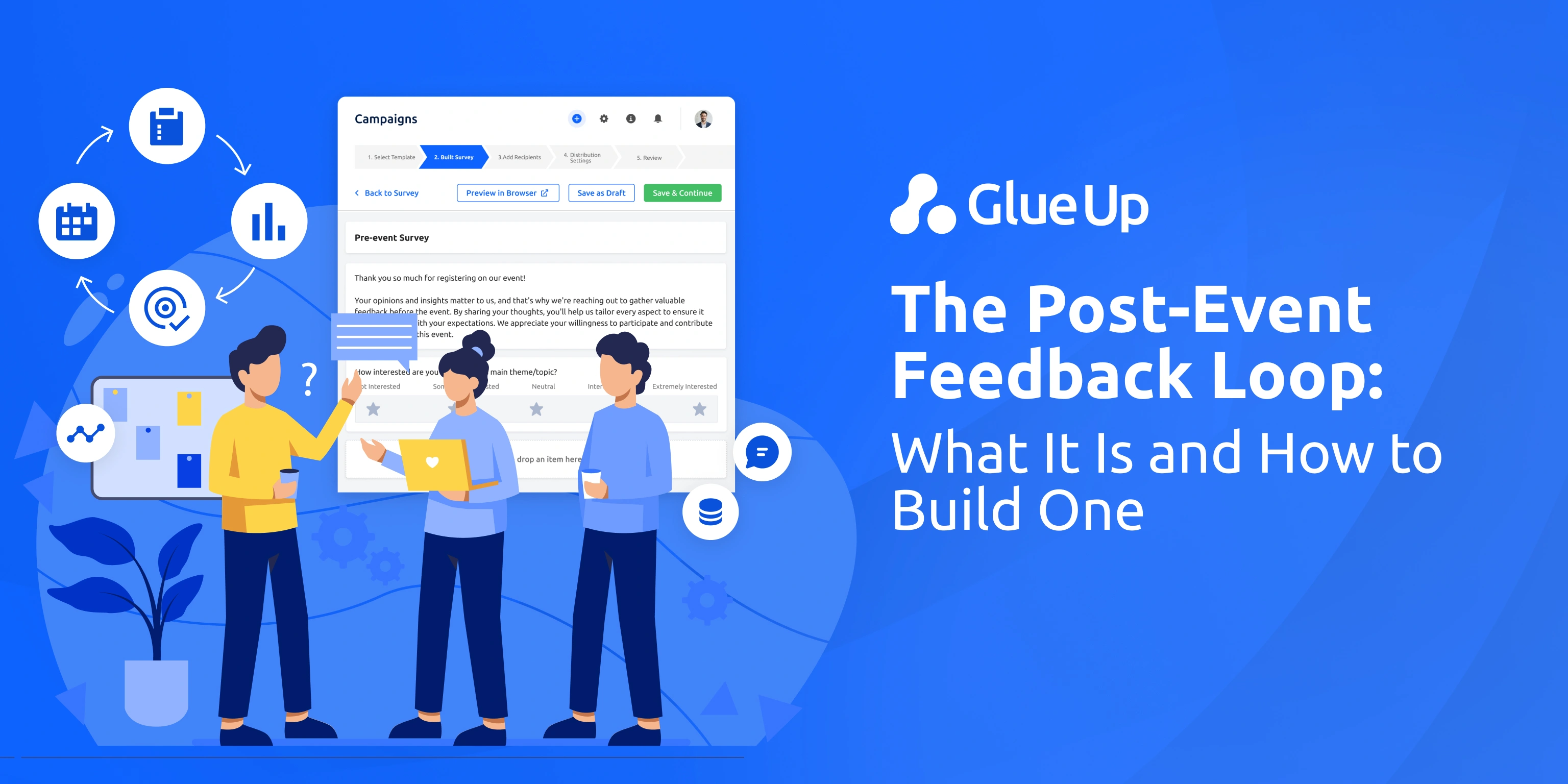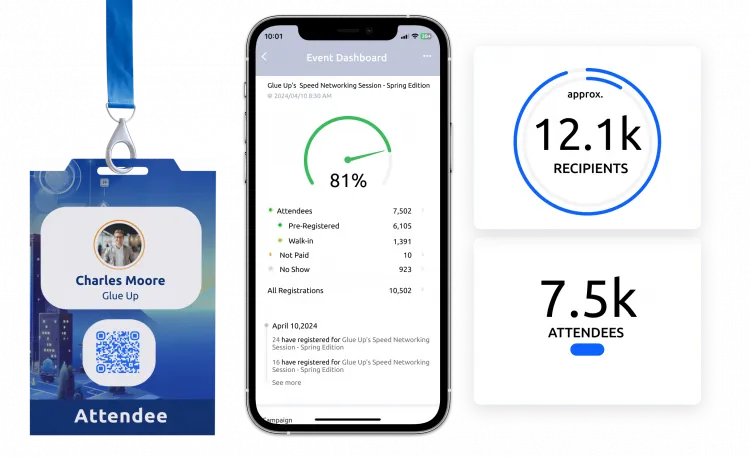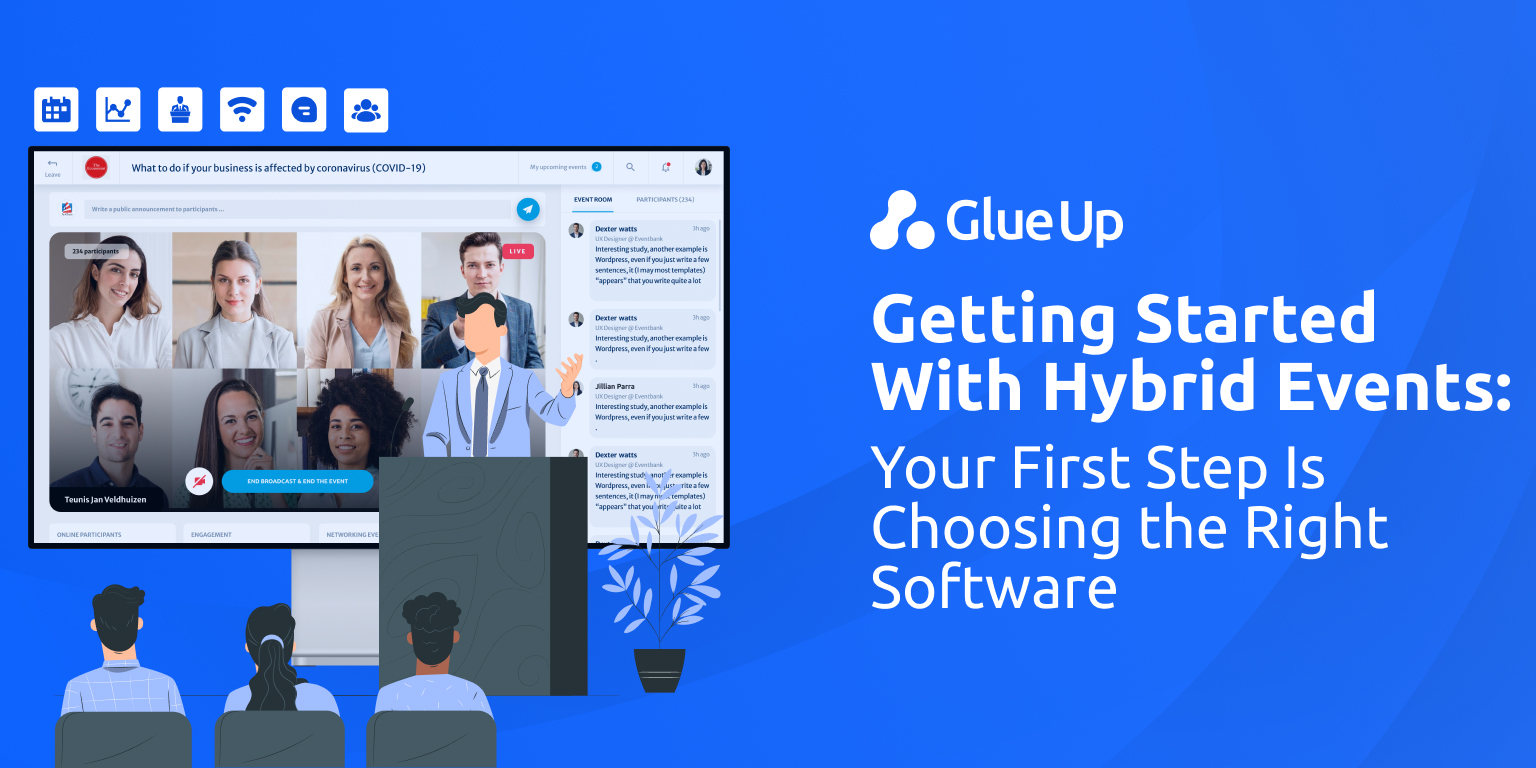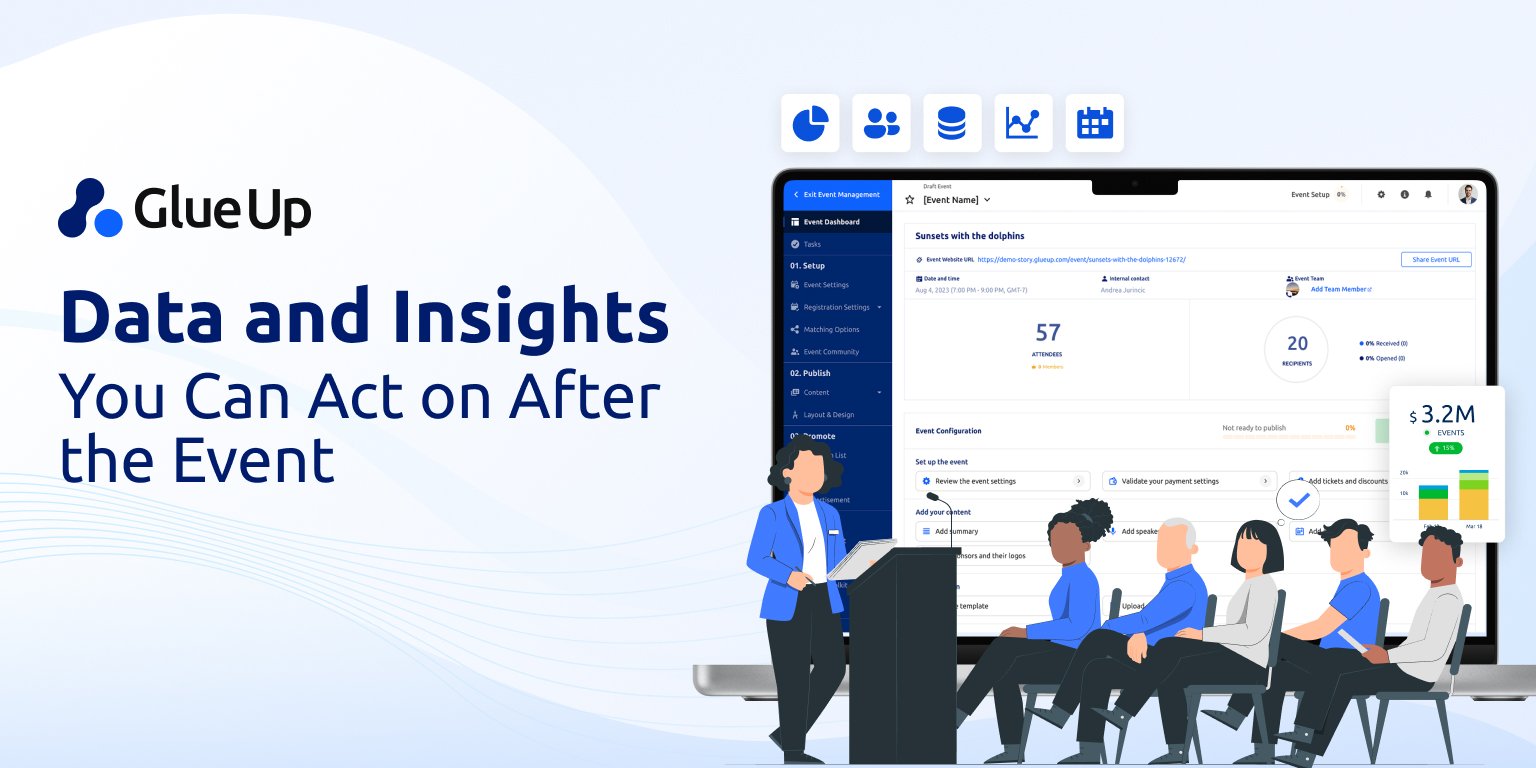
How do you know if your last event actually delivered what your members, sponsors, and executives expected? Sure, you got the attendance, the revenue, and the applause at the closing session, but how confident are you that the event met the deeper expectations of your most valuable stakeholders? In the membership space, perception often substitutes for reality. A full room can feel like success, but without structured post-event feedback, you don’t know if sponsors made the right connections, if members found measurable value, or if executives saw outcomes aligned with strategy.
And what makes this even more interesting is the target audience, who, unlike casual event-goers, are stakeholders with very specific expectations. Sponsors justify investment based on leads and visibility. Members weigh event experiences against renewal decisions. And executives look for evidence that resources were used effectively and that events support long-term goals.
So, the last thing you want to do is ignore their input and put retention, revenue, and credibility on the line. With structured post-event feedback collected through powerful event management software like Glue Up, you can replace guesswork with insights you can act on.
For a quick overview of our platform’s capabilities, book a demo today!
Key Takeaways
- Post-event feedback connects event experiences directly to retention, sponsorship, and credibility.
- Associations that skip feedback rely on assumptions instead of actionable insights.
- Methods like real-time polling, community discussions, sponsor debriefs, and automated campaigns expand beyond surveys.
- Building a feedback loop means defining objectives, centralizing responses, sharing outcomes, and applying changes.
- Glue Up’s surveys, campaigns, community module, reporting, and AI insights make feedback continuous and measurable.
Why Post-Event Feedback Matters
In the membership space, post-event feedback isn’t a generic satisfaction survey, thank you letter, or call. It’s the structured collection and analysis of attendee, sponsor, and stakeholder input that helps you measure impact, improve programming, and justify investment. The strategic process connects the dots between what people experienced at the event and the long-term value they expect from your association.
Think of it as an operational loop. Attendees provide input, organizers analyze patterns, leaders adapt programming, and the next event reflects those improvements. Associations that use this loop consistently build credibility and stronger retention because stakeholders see their voices translated into visible changes.
Why It’s Crucial for Modern Associations
- Improves Member Retention: Members want to see that their feedback shapes the future. For example, if post-event surveys reveal dissatisfaction with session formats, adjusting to more interactive panels signals responsiveness. That responsiveness translates into higher renewal intent.
- Secures Sponsorship Renewal: Sponsors evaluate ROI based on visibility and qualified leads. If you can show them that 80% of attendees recalled their brand presence or that their sponsored session ranked highest in satisfaction scores, you give them a data-backed reason to reinvest.
- Strengthens Board Confidence: Boards expect evidence, not anecdotes. Reporting on metrics like Net Promoter Score (NPS), sponsor visibility ratings, or post-event engagement rates provides concrete proof that events are achieving strategic goals.
- Drives Continuous Improvement: Each event becomes a source of intelligence. One chamber discovered through surveys that younger members preferred shorter networking blocks. By applying that insight, they increased attendance among members under 35 at subsequent events.
- Informs Future Programming: Feedback highlights what resonates and what doesn’t. If surveys show high demand for industry-specific sessions or breakout learning, you know exactly where to allocate resources next year.
When feedback is gathered consistently and analyzed through a robust AI-powered event management platform with modern member engagement tools, it stops being a one-off report. It becomes a continuous loop that links every event to strategy, retention, and ROI.
The Risks of Skipping Post-Event Feedback
Without a structured post-event feedback process, most associations fall back on attendance counts and revenue as the only measures of success. Those metrics tell part of the story, but they don’t capture the quality of the experience or its impact on renewal, sponsorship, and long-term engagement. For an audience of executives, sponsors, and members, surface-level reporting isn’t enough.
Industry research underscores the gap. A survey from Channel Technologies found that organizations that actively evaluate events are significantly better at improving outcomes over time. Meanwhile, Constant Contact highlights that associations that neglect feedback via surveys or other methods miss opportunities to strengthen loyalty and optimize programming.
Here are the most common pitfalls of ignoring post-event feedback in the membership space:
- Assumptions Replace Insights: Relying on headcount or applause creates a false sense of success. Sponsors may leave unsatisfied, members may question value, and executives may doubt alignment with strategy.
- Renewal Risks Increase: Without feedback, you don’t know if events are meeting the needs of dues-paying members. This weakens the case for renewal and puts retention at risk.
- Sponsor ROI Goes Unmeasured: If you can’t show sponsors how many meaningful connections they made or how visible they were, they’re less likely to reinvest in future programs.
- Lost Learning Opportunities: Every event is a test of content, logistics, and engagement strategies. Without structured evaluation, mistakes repeat and improvements stall.
- Weaker Board Reporting: Boards want evidence of performance, not anecdotes. Missing data makes it harder to justify budgets, defend expenses, or secure growth investments.
In short, failing to capture and act on post-event insights undermines the very outcomes associations are measured against: retention, revenue, and credibility.
Methods for Collecting Post-Event Feedback
If post-event feedback is the engine of continuous improvement, then the methods you use to collect it are the fuel. In 2025 and beyond, you need a mix of approaches that capture perspectives from every type of stakeholder and channel. Here’s how to do it well:
Structured Surveys
Surveys remain a cornerstone, but they should go beyond satisfaction scores. Ask questions that reveal business outcomes: “Did this event influence your decision to renew?” or “How many qualified leads did your sponsorship generate?”. The right questions link experiences directly to retention and ROI.
Automated Follow-Ups
Schedule automated follow-up emails or app notifications within 24–48 hours. You can also embed calls for feedback alongside event highlights to help attendees reflect and respond while the experience is still fresh.
Real-Time Polling
Polls during sessions or networking activities capture immediate reactions. For example, asking “Was this session relevant to your role?” mid-event provides insights you can compare with survey results later.
Online Communities
If you host a digital member community, dedicate a thread to post-event reflections. Members often share unfiltered insights here, from session relevance to networking quality, that structured tools might miss.
Sponsor and Partner Debriefs
Sponsors and partners deserve their own channel of feedback. Brief surveys or calls help you measure brand visibility, ROI, and satisfaction with logistics. These insights feed directly into sponsorship renewal strategies.
Social Media Listening
Monitor hashtags, LinkedIn discussions, and event mentions. Organic commentary often reveals what resonated most (and what didn’t), giving you a real-time pulse of attendee sentiment.
How to Build a Post-Event Feedback Loop
Together, these methods above create a multi-layered view of your event’s performance. However, collecting data is only the first step. You need to interpret and act on that data using the right member engagement strategies and tools to create a structured post-event feedback loop. Do it right, and you can connects data collection, analysis, communication, and change to ensure stakeholders see that their voices shape the future.
Here’s how to build one:
Step 1: Define Objectives Upfront
Decide what you want to learn before the event begins. Are you measuring sponsor ROI, member satisfaction, or executive engagement? Clarity ensures your surveys, polls, and follow-ups gather the right data.
Step 2: Capture Data Through Multiple Channels
Use a blend of methods based on your team’s capabilities, resources, and audience preferences. Each channel adds a different perspective, creating a fuller picture of performance.
Step 3: Centralize and Analyze Feedback
Don’t let insights sit in silos. Ideally, you should opt for event management software capable of connecting your membership and event workflows and consolidating all feedback. This enables you to identify patterns, compare results across events, and link feedback to outcomes like renewals or sponsorship growth.
Step 4: Share Results With Stakeholders
Boards, sponsors, and members expect transparency. Share highlights, key learnings, and planned improvements. For example, reporting to sponsors that their session had the highest engagement reinforces value and increases renewal likelihood.
Step 5: Apply Insights to Future Events
Close the loop by acting on what you learn. If members rated networking poorly, experiment with smaller breakout groups next time. If sponsors wanted more visibility, expand signage or digital exposure.
Step 6: Repeat Consistently
A feedback loop isn’t a one-time exercise. Each event adds data to your baseline, making your programming, sponsorship strategy, and reporting more reliable over time.
Closing the Loop With Glue Up

A post-event feedback loop only works when insights flow seamlessly into action. At its core, Glue Up offers association management software that unifies memberships, events, finance, and campaigns into connected workflows. You also get a wide range of add-ons and integrations you can use to turn post-event feedback from scattered data points into actionable intelligence.
- Surveys Software: Deploy targeted surveys to members, sponsors, and speakers to capture structured input.
- Automated Campaigns: Send personalized follow-ups through the email and campaign manager to request feedback within hours of the event.
- Community Management Software: Extend conversations into post-event threads where members share qualitative feedback and peer reflections.
- Engagement Scoring: Track individual participation and responsiveness to surveys, polls, and campaigns to understand which members are most engaged.
- Finance Module: Tie sponsor feedback to ROI metrics by linking visibility, leads, and reported satisfaction with actual financial outcomes.
With our all-in-one event software, you can create a continuous cycle of learning, improvement, and measurable growth. But the proof is in the practice. So, take the next step and book a demo today to see how Glue Up turns post-event insights into long-term impact.
Frequently Asked Questions
What is a post-event feedback loop in associations?
It’s a structured process of collecting, analyzing, and applying feedback from members, sponsors, and executives to improve events and justify ROI.
How does post-event feedback affect member retention?
When members see their feedback reflected in future programming, they perceive higher value from their dues, which strengthens renewal intent.
What’s the best timing for collecting feedback?
Within 24–48 hours of the event. Prompt follow-ups capture experiences while they’re fresh and lead to higher response rates.
Can feedback loops benefit sponsors as well as members?
Yes. Sponsors rely on data showing leads, visibility, and engagement. Post-event reports supported by feedback make it easier to secure renewals.
How does Glue Up help associations manage post-event feedback?
Glue Up centralizes surveys, campaigns, engagement scoring, and reporting, linking feedback directly to membership renewals, sponsor ROI, and long-term strategy.
Quick Reads
- Add-On Cart for Member Retention & Growth
- Simplify Multi-Currency Payment Posting for Community Chapters With Glue Up + Paygage
- AI Automation for Event Registration & Beyond
- Integrating AI into CRM for Membership Growth
- How to Build a Chapter Event Calendar
- What Is All-In-One Association Software?
- AI-Powered Member Check-In Software



